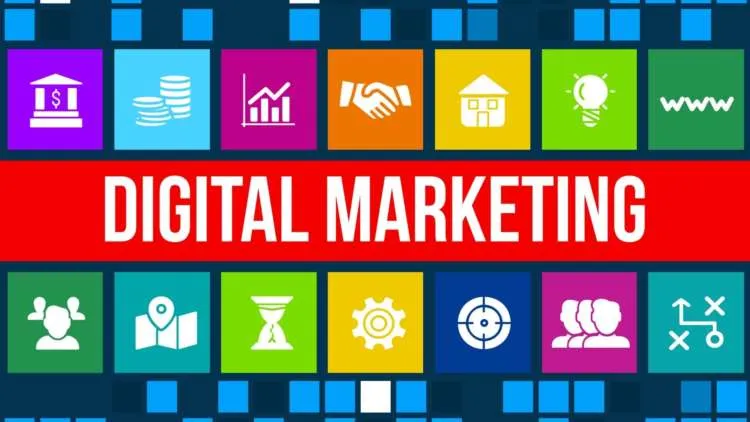Investing in B2B content marketing can feel like pouring your heart and soul into a masterpiece, only to see crickets chirping in the comments section. Disappointing engagement and a lack of traction can be frustrating, but before you throw in the towel, let’s diagnose the problem.
Here are five common reasons why your B2B content might be underperforming, along with actionable tips to get it back on track and thriving:
1. Targeting the Wrong Audience: Aiming in the Dark vs. Hitting the Bullseye
- The Problem: You’re creating content in a vacuum, without a clear understanding of your ideal customer profile.
- The Fix: Conduct thorough buyer persona research. Imagine your ideal customer – what are their pain points, goals, and challenges? What information are they actively searching for? Tailor your content to their specific needs and interests.
Action Steps:
- Develop buyer personas: Conduct in-depth market research through surveys, interviews with existing customers, and competitor analysis. Identify key demographics, firmographics, and psychographics of your ideal customer.
- Map your content to the buyer’s journey: Understand the different stages of your target audience’s decision-making process (awareness, consideration, decision) and create content that addresses their needs at each stage.
2. Content Coma: Boring Blandness vs. Engaging Expertise
- The Problem: Your content lacks originality and simply rehashes existing information. It fails to capture attention or provide unique value.
- The Fix: Spice things up! Infuse your content with personality, data-driven insights, humor, or compelling storytelling. Become a go-to source for thought leadership and insightful content.
Action Steps:
- Focus on thought leadership: Establish yourself as an industry expert by creating content that tackles new trends, challenges existing paradigms, and offers valuable solutions.
- Embrace different content formats: Move beyond text-based content. Utilize infographics, explainer videos, case studies, or interactive quizzes to cater to diverse learning styles and enhance engagement.
- Storytelling is key: Humans are wired to connect with stories. Weave narratives into your content to illustrate key points, connect with your audience on an emotional level, and make your content more memorable.
3. The SEO Mystery: Speaking a Different Language
- The Problem: Your content isn’t optimized for search engines, making it difficult for potential customers to find it.
- The Fix: Keyword research is your secret weapon! Identify relevant keywords and search terms that your target audience is actively using, and integrate them naturally throughout your content.
Action Steps:
- Conduct keyword research: Utilize tools like Google Keyword Planner or Ahrefs to identify high-volume, low-competition keywords relevant to your industry and target audience.
- Optimize titles and meta descriptions: Include your target keywords in your website titles, meta descriptions, and headers to improve search engine ranking and entice users to click.
- Internal linking strategy: Don’t let your content live in isolation. Link to relevant internal pages on your website that provide deeper dives on related topics. This keeps users engaged within your content ecosystem and improves SEO.
4. Limited Distribution: Content Silos vs. Content Omnipresence
- The Problem: You’re only promoting your content on your own website, restricting its reach and potential audience.
- The Fix: Think beyond your website! Share your content on social media platforms relevant to your target audience, participate in online industry communities, and explore guest blogging opportunities on high-authority websites.
Action Steps:
- Social media promotion: Leverage social media platforms like LinkedIn, Twitter, and industry-specific forums to share your content and engage with potential customers. Utilize relevant hashtags to increase discoverability.
- Content syndication: Syndicate your content on relevant online publications or industry blogs to reach a wider audience and establish yourself as a thought leader within your niche.
- Paid advertising: Explore paid advertising options on platforms like Facebook or Google Ads to target your ideal audience with laser focus and maximize reach for valuable content pieces.
5. Inconsistency is the Name of the Game: Sporadic Posting vs. Content Cadence
- The Problem: Your content strategy is like a rusty swing set – full of potential but rarely used.
- The Fix: Develop a consistent content calendar. Plan your topics in advance and stick to a regular publishing schedule.
Action Steps:
- Create a content calendar: Develop a content calendar that outlines topics, target audience, publishing dates, and content formats (e.g., blog posts, infographics, videos)
We’ve addressed the foundational reasons why your B2B content might be underperforming. But what if you want to push the boundaries and truly unleash the content beast within? Here are some additional strategies to elevate your content creation process:
Embrace Multimedia Mania:
People consume information in various ways. Don’t limit yourself to just text-based content. Integrate multimedia elements like:
- Infographics: Visually represent complex data and statistics in an easily digestible format.
- Explainer videos: Break down complex topics into engaging and concise video tutorials.
- Interactive quizzes and assessments: Allow your audience to self-diagnose their challenges and discover solutions offered by your products or services.
Data is King (or Queen):
Back up your claims with hard evidence. Here are some ways to add data credibility:
- Industry research and statistics: Cite reputable studies and reports from industry analysts or research firms.
- Customer case studies: Showcase real-world success stories of how your solutions have benefited customers.
- Data visualization: Utilize charts, graphs, and other visual elements to present data insights effectively.
Internal Linking Love:
Don’t let your content live in isolation. Here’s how to leverage internal linking:
- Link to relevant internal pages: Guide users on a deeper dive within your content ecosystem by linking to related blog posts, white papers, or product pages.
- Contextual linking: Integrate natural links within your content that seamlessly connect users to relevant information on your website.
The Power of Promotion: Beyond Organic Reach
Social media promotion is crucial, but explore further avenues:
- Paid advertising: Utilize targeted advertising options on social media platforms or search engines to reach a highly specific audience segment with high purchase intent.
- Influencer marketing: Partner with industry influencers or thought leaders to promote your content to their established audience.
- Public relations (PR): Pitch your content to relevant publications or online media outlets to gain wider exposure and establish brand authority.
Analytics: Your Content GPS
Don’t publish content and hope for the best. Here’s how to leverage analytics:
- Website analytics tools: Utilize tools like Google Analytics to track key metrics like website traffic, user engagement (time spent on page, bounce rate), and conversions (leads generated, sales).
- Content performance tracking: Monitor the performance of individual content pieces to identify what resonates with your audience and adapt your strategy accordingly.
- A/B testing: Test different headlines, calls to action (CTAs), or content formats to see what drives the best results and optimize your content for maximum impact.
Collaboration is Key:
Partnering with others can expand your reach:
- Guest blogging: Contribute guest posts to high-authority websites in your industry to reach a new audience and establish backlinks to your website.
- Co-created content: Partner with industry experts or influencers to co-create content like webinars, ebooks, or white papers, leveraging each other’s audience base.
Become a Content Marketing Machine:
Content marketing is a long-term game. Stay ahead of the curve:
- Stay updated on content marketing trends: Continuously research and explore new approaches, formats, and tools to optimize your content strategy for evolving audience preferences and technological advancements.
- Invest in content marketing training: Equip your team with the latest content marketing skills and best practices to create high-quality content consistently.
By implementing these additional strategies, you’ll not only address the pitfalls that hinder content performance but also elevate your content creation process to a whole new level. Remember, high-quality, informative, and engaging content is the cornerstone of any successful B2B content marketing strategy. Unleash your inner content beast, provide exceptional value to your target audience, and watch your content soar!
Ever pour your heart and soul into a blog post or video, only to see crickets chirping in the comments section? It happens to the best of us. But before you throw in the towel on content creation, let’s diagnose the problem.
Here are five reasons your content might be underperforming, along with actionable tips to get your content back on track and thriving:
1. Audience MIA? You Don’t Know Who You’re Talking To
- The Problem: You’re creating content in a vacuum, without a clear understanding of your target audience.
- The Fix: Do your research! Develop buyer personas to identify your ideal reader. What are their pain points? What information are they searching for? Tailor your content to their needs and interests.
2. Snoozeville Alert! Your Content is a Boring Bland-Fest
- The Problem: Your content lacks originality, it’s just a rehash of what’s already out there.
- The Fix: Spice things up! Infuse your content with personality, data, humor, or unique storytelling. Become a go-to source for insightful and engaging content.
3. The Search Engine Mystery: You’re Not Speaking SEO
- The Problem: Your content isn’t optimized for search engines. People can’t find it, so they can’t engage with it.
- The Fix: Keyword research is key! Identify relevant terms your target audience is searching for and integrate them naturally throughout your content.
4. Limited Distribution? Your Content is Trapped in a Silo
- The Problem: You’re only promoting your content on your own website. It’s not reaching a wider audience.
- The Fix: Look beyond your website! Share your content on social media platforms, relevant online communities, and guest blog on other websites.
5. Inconsistent is the Name of the Game: You’re Posting Here and There
- The Problem: Your content strategy is sporadic. You publish a post once a month, then disappear for weeks.
- The Fix: Develop a consistent content calendar. Plan your topics in advance and stick to a regular publishing schedule. This builds trust and keeps your audience engaged.
Bonus Tip: Pump Up the Click-Through Rate (CTR):
- Craft compelling headlines that pique curiosity and entice users to click.
- Optimize your meta descriptions with strong calls to action (CTAs).
- Use high-quality visuals that are relevant to your content.
By addressing these common pitfalls and implementing these actionable tips, you can transform your content from an underperformer to a chart-topping champion. Remember, content creation is a marathon, not a sprint. Stay focused, keep creating valuable content, and watch your audience and engagement grow!
Unleashing the Content Beast: Beyond the Basics
Sure, we’ve covered the essential reasons why your content might be falling flat. But what if you want to take things a step further and truly unleash the content beast within? Here are some additional strategies to consider:
Embrace Multimedia Mania:
People consume information in different ways. Don’t limit yourself to just text-based content. Integrate multimedia elements like infographics, explainer videos, or interactive quizzes to cater to diverse learning styles and boost engagement.
Data is King (or Queen):
Back up your claims with statistics, research findings, or case studies. Data adds credibility and authority to your content, making it more trustworthy and persuasive.
Internal Linking Love:
Don’t let your content live in isolation. Link to relevant internal pages on your website. This improves user experience by guiding readers to deeper dives on related topics and keeps them engaged within your content ecosystem.
The Power of Promotion:
Social media promotion is crucial, but don’t stop there. Explore paid advertising options on platforms like Facebook or Google Ads to target your ideal audience with laser focus and maximize reach.
Analytics: Your Content GPS
Don’t publish content and hope for the best. Utilize website analytics tools like Google Analytics to track key metrics like website traffic, user engagement, and conversions. Analyze this data to identify what’s working and what needs tweaking.
Collaboration is Key:
Partner with influencers or industry experts in your niche for guest blog posts, co-created content, or even joint webinars. This taps into their audience and establishes you as a thought leader within your field.
Become a Content Marketing Machine:
Content marketing is a long-term game. Stay up-to-date with the latest content marketing trends and best practices. There are always new strategies and tools emerging to help you optimize your content and reach your target audience more effectively.
By implementing these additional tips, you’ll not only address the common pitfalls that hinder content performance, but also elevate your content creation process to a whole new level. Remember, high-quality, informative, and engaging content is the cornerstone of any successful content marketing strategy. So, unleash your inner content beast, provide value to your audience, and watch your content soar!
Content Marketing: Weighing the Pros and Cons
Content marketing is a powerful tool for businesses of all sizes, but it’s not without its challenges. Here’s a balanced view of the pros and cons to help you decide if it’s the right fit for your marketing strategy:
Pros:
- Cost-Effective: Compared to traditional advertising, content marketing offers a more sustainable and cost-effective way to reach your target audience.
- Builds Brand Awareness & Trust: High-quality content positions you as an authority in your industry, fostering trust and brand loyalty with your audience.
- Improved SEO & Organic Traffic: Creating content optimized for search engines increases your website’s visibility and drives organic traffic.
- Generates High-Quality Leads: Valuable content attracts potential customers who are genuinely interested in what you offer.
- Long-Term ROI: Effective content marketing yields results that compound over time, offering a strong return on investment.
Cons:
- Time Commitment: Creating high-quality content takes time and effort. You’ll need a consistent content calendar and a dedicated team (or individual)
- Patience is Key: Don’t expect overnight success. Building a loyal audience and seeing significant results takes time and consistent effort.
- Content Saturation: The content marketing landscape is crowded. Standing out requires creativity, strategic planning, and a unique voice.
- Requires Diverse Skills: Effective content marketing involves a blend of writing, SEO optimization, social media promotion, and content analytics.
- Measurement Can Be Tricky: Tracking the ROI of content marketing can be complex. Utilize website analytics and A/B testing to measure success accurately.
In Conclusion:
Content marketing offers a strategic approach to attracting and engaging your target audience. While it requires time, effort, and a well-defined strategy, the potential rewards are significant. By carefully considering the pros and cons, you can determine if content marketing is the right fit for your business goals.
Read More : Artificial Intelligence 2024: Trends & Insights




